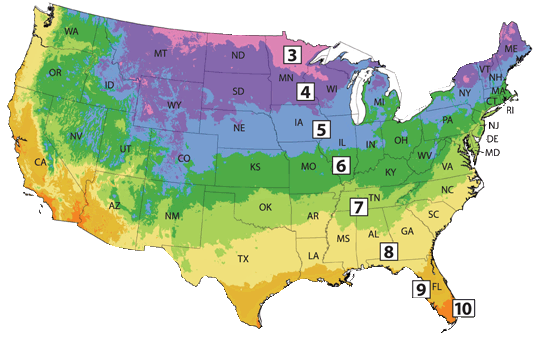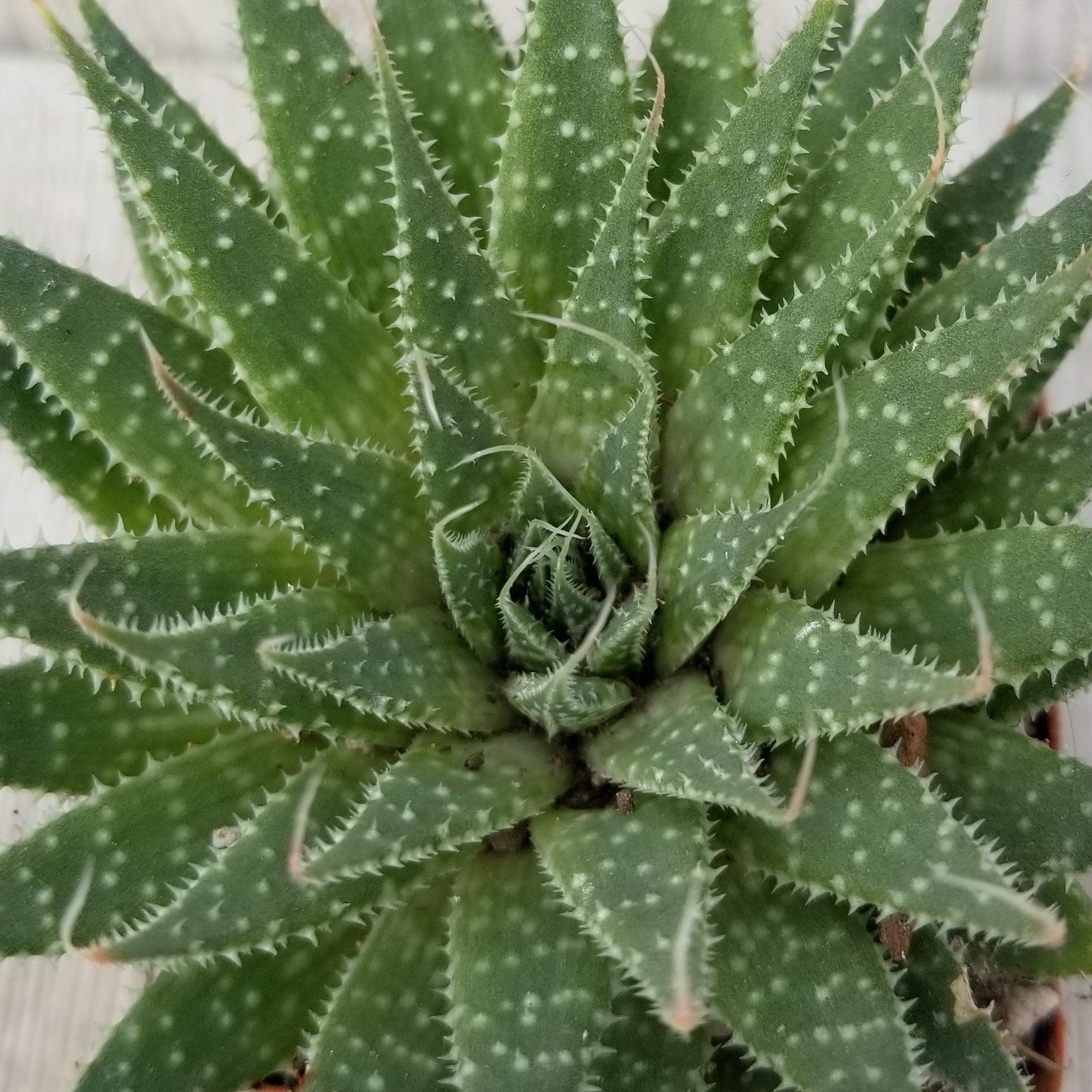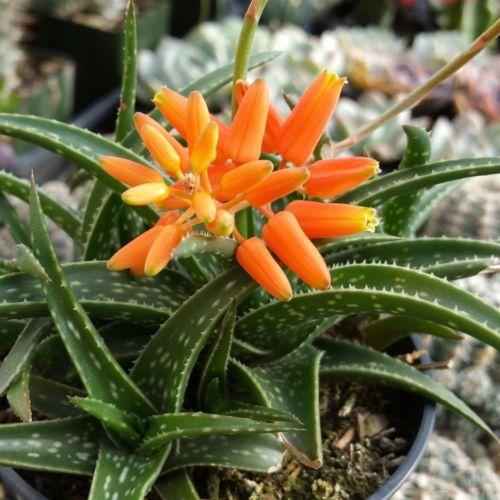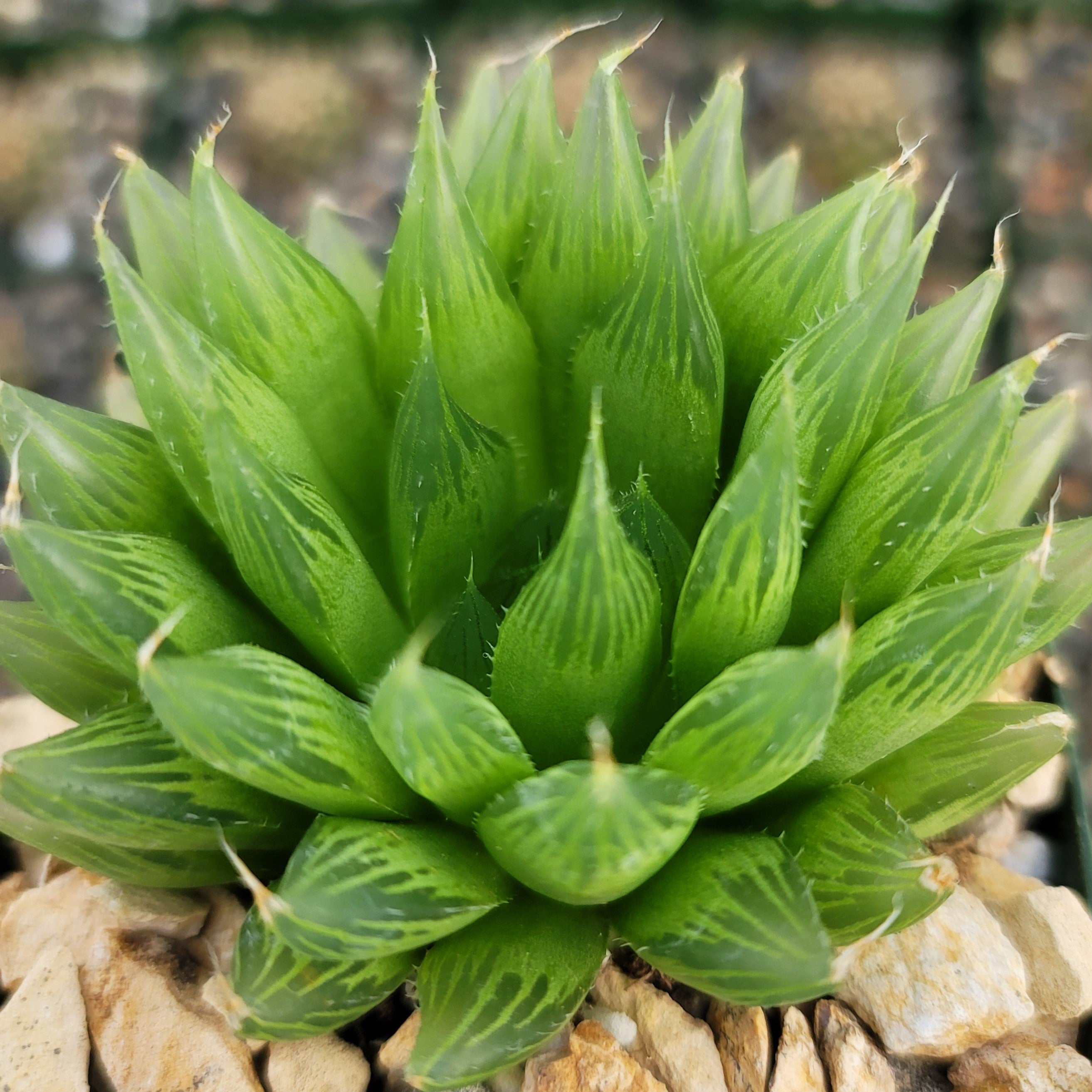Christmas Cactus 'Care & Growing Guide' - Everything You Need to Know!
Updated: January 28, 2025

Key Highlights
- To maintain the bloom of your cactus throughout the winter, remove faded Christmas cactus blooms or deadhead them.
- Provide your cactus plant with a cool environment of around 50°F to 55°F for about 6-8 weeks in the fall. This temperature drop helps trigger bud formation and blooming.
- Keep the soil slightly moist but avoid overwatering. Water your cacti when the top inch of soil feels dry to the touch. During the blooming period, reduce watering to allow the plant to rest.
- Place your cactus in a spot away from drafts or sudden temperature changes. Avoid placing it near windows or doors that are frequently opened.
- During the growing season, feed your cactus with a balanced, water-soluble fertilizer diluted to half-strength. However, avoid fertilizing during the blooming period, as it can hinder flower production.
The Christmas cactus (Schlumbergera bridgesii), a low-maintenance and vibrant houseplant, and has become a beloved holiday tradition for many plant enthusiasts. In the middle of the winter, this is one of the few plants that bursts into bloom, spreading holiday cheer with its colorful flowers.
Native to the tropical rainforests of Brazil, the Christmas cactus is often referred to by its other common names, including holiday cactus, winter cactus, and crab cactus.
The Christmas cactus gained popularity because of its stunning and vibrant flowers, which typically bloom during the holiday season. Its flat, segmented leaves and cascading or trailing growth habit make it a visually striking addition to any space.
Longevity – Up to 100 Years
The Christmas cactus has become a cherished family tradition that is passed down from one generation to another, bringing joy and beauty to each Christmas celebration. The Christmas plant can live for up to 100 years, and various hybrids and cultivars have been developed to showcase different flower colors, including shades of pink, red, white, yellow, and even purple.
This unique tropical plant is named after Frédéric Schlumberger, a Frenchman who was an avid collector of cacti and succulents in the 19th century.
There are three types of holiday cacti: Thanksgiving cactus, Easter cactus, and Christmas cacti, each with unique characteristics. It is a particularly beautiful houseplant for the winter season, making it a festive addition to any home.
Its popularity can be attributed to its relatively easy-care requirements and its ability to thrive indoors. With proper care and the right conditions, this captivating succulent can bring joy and beauty to your home year after year.
How to Get a Christmas Cactus to Bloom - Flowering Tips

Christmas cactus flowers are truly a sight to behold. These tubular flowers come in a variety of vibrant colors; and you can buy them in various shades of pink, red, white, yellow, and even purple.
The flowers have a unique shape, with long, tubular petals that curve backward, giving them a graceful and elegant appearance.
These blooms usually appear during the winter months, adding a touch of festive cheer to any space.
Your Christmas plants bloom approximately 12 weeks after planting under optimal conditions. Christmas plants will continue to bloom for a period of 4-6 weeks: making them a delightful and long-lasting addition to your indoor or outdoor garden.
Why Real Christmas Cactus are Rare and Hard to Find?
During the Christmas season, a lot of plants that are marketed as types of Christmas cacti are actually not true Christmas cacti at all. These plants are usually hybrids of Thanksgiving cacti, which are similar but not exactly the same, and are marketed as Holiday cactus. The growers manipulate the blooming process to make them flower around Christmas time. By carefully controlling the duration of light and darkness, they can trigger the plants to bloom around Christmas time.
Blooming a Christmas cactus indoors
To encourage blooming, it's important to provide your cactus with the right conditions.
- Make sure it gets plenty of bright, indirect light during the day. Avoid placing it in direct sunlight, as this can cause sunburn.
- During the fall season, give your cactus a period of uninterrupted darkness for about 12-14 hours each night. This mimics the natural light conditions that trigger blooming.
- Keep the soil slightly moist but not overly saturated, and avoid overwatering.
Blooming a Christmas cactus outdoors
If you're growing your Christmas cactus outdoors, it's important to consider the climate and growing conditions.
- Make sure to place it in a spot that receives bright, indirect light but also some shade during the hottest parts of the day.
- Outdoor cacti benefit from a period of cooler temperatures (around 50°F to 55°F) for about 6-8 weeks in the fall. This temperature drop helps stimulate bud formation and blooming.
- Remember to protect your cactus from frost and bring it indoors if temperatures drop too low.
- The Christmas cacti bloom in response to changes in light and temperature. As the days get shorter and the temperatures cool down, it signals the plant to produce, flower buds form, and eventually flowers.
- Regardless of whether your cactus is indoors or outdoors, proper care is essential for optimal blooming. Ensure that the soil is well-drained and use a cactus-specific potting mix.

Fertilize your cactus during the growing season with a balanced, water-soluble fertilizer diluted to half strength. Avoid fertilizing during the blooming period. Lastly, be patient! Schlumbergera bridgesii typically bloom in response to changes in light and temperature, so it may take a bit of time for them to produce those stunning flowers.
With these tips and minimal care, you'll increase your chances of getting beautiful blooms from your cactus, whether it's growing indoors or outdoors.
Care of Christmas Cactus - Step-by-Step Guide
The Schlumbergera are incredibly easy to care for. In their native areas, they are epiphytic plants, which means they grow on trees and absorb moisture from the air. However, they can also thrive indoors with minimal care. Here's a step-by-step guide for easy Christmas cactus care:
Quick Reference

Bloom Season

Flower Color

Growth Rate

Hardiness Zone

Mature Size

Plant Type

Sun Exposure

Toxicity

Watering Needs
Christmas Cactus Watering: Tips & Tricks
Water your Christmas cactus sparingly, allowing the soil to dry out slightly between waterings, with a general rule of thumb being to water every 7-10 says in the spring and summer, and every 4-6 weeks in the fall and winter. Unlike most cacti, the Schlumbergera bridgesii requires more watering; but they don't like to sit in water for a long time. Aim to water your cactus when the top inch of the soil feels dry to the touch. Use room temperature water and thoroughly saturate the soil, allowing any excess water to drain away. Avoid overwatering, as this can lead to root rot and other issues.
In the spring and summer, during the growing season, your Christmas plant may require more frequent watering. Keep an eye on the soil moisture and adjust your watering schedule accordingly. However, it's important to reduce water in early fall and mid-October. This mimics the drier conditions of its native habitat and helps promote a healthy flowering period during the holiday season.

Christmas Cacti Love Humidity
These winter plants appreciate higher humidity levels, which can be achieved by placing a tray filled with water and pebbles beneath the Christmas cactus pot. As the water evaporates, it creates a humid microclimate around the plant. Alternatively, you can mist the leaves occasionally to provide a boost of moisture. Just be careful not to overdo it, as excessive moisture can lead to fungal issues.
Christmas Cactus Light Requirements
The Christmas cactus is a popular houseplant; as it can handle bright, indirect light. It prefers a spot near a window where it can receive plenty of bright, filtered sunlight throughout the day. However, direct sunlight can be too intense for this plant and may cause sunburn on its leaves. So, it's best to avoid placing it in direct sunlight, especially during the hot summer months.
If you're wondering how much light your cactus needs, aim for about 4-6 hours of light per day. During the growing season, which is typically spring and summer, providing longer daylight hours can help promote healthy growth and blooming. You can achieve this by placing your cactus near a window with bright, indirect light or by using artificial grow lights if natural light is limited.

In contrast, during the fall and winter months, the Christmas cactus benefits from shorter daylight hours. So, if you want your cactus to bloom, it's important to provide it with around 8-10 hours of darkness at night. This can be achieved by placing it in a room that's not illuminated by artificial lights during the evening hours.
Key Bloom Feature
Christmas cacti have the wonderful ability to bloom not just during the holiday season, but also in spring if they're given the right conditions, like shorter days. So, you can enjoy their beautiful blooms twice a year if you provide them with the proper care they need. It's like getting double the floral delight!
Keep in mind that it is adaptable when it comes to light conditions. It can tolerate lower light levels, but it may result in slower growth and fewer blooms. On the other hand, exposing it to too much bright light or direct sunlight can lead to leaf burn and damage. Finding that sweet spot of bright, indirect light and providing the right balance of daylight and darkness will help your cactus thrive and put on a stunning display of flowers.
The 3 Types of Holiday Cactus
As a holiday plant, this hybrid Christmas cactus is often mislabeled and confused with other similar cacti by garden centers. The Thanksgiving and Easter cacti are often referred to as types of Christmas cacti because they share similar characteristics and are part of the same genus, Schlumbergera. These holiday plants are known for their ability to bloom zygomorphic flowers (two differently sized petal) around the holiday season, just like the Christmas cactus.
Christmas cacti thrive in shaded or bright indoor pots and can be grown indoors anytime until summer. With proper care, it can grow quickly, reaching a two-foot spread in just a few years, with blooms at the beginning of each winter. All varieties can be planted indoors until summer, allowing for easy replanting or outdoor relocation. Here are the detailed differences between these:

1
Christmas cactus (Schlumbergera bridgesii)
BUY AT PLANET DESERTkeypoints:
- USDA Hardiness Zones:10, 11, 12
- Bloom Time: December - February
- Growth Habit: Smooth – Scalloped flat stem segments
- Color Varieties: Pink, red, orange, white, purple, yellow
Many Christmas cacti sold during the holiday season are not real Christmas cacti but rather hybrids of Thanksgiving cacti that are forced to bloom for Christmas. The real Christmas cactus has flattened stems with rounded edges, giving it a distinct appearance. As its name suggests, it blooms during the Christmas season, usually in December. The flowers are usually vibrant and come in shades of pink, red, or white. It is a popular choice for holiday decorations due to its stunning blooms and easy-care requirements.
Pro Tip - Holiday Cactus
The majority of Christmas Cactus sold during the Holiday season are not actually the real Christmas Cactus but are Thanksgiving Cactus; manipulated to bloom during the Holiday season. So, if we are out of stock of Christmas Cactus, please look at our Christmas Blooming Holiday Cactus. Although not the true Christmas cactus, they still bloom during the holiday season, adding holiday cheer and a special touch to your decorations. Buy Holiday Cactus Now

2
Thanksgiving cactus (Schlumbergera truncata)
BUY AT PLANET DESERTkeypoints:
- USDA Hardiness Zones:10,11,12
- Blooming Period: Mid November – Until New Year
- Shape: More Pronounced - Pointed stem segments
- Color Varieties: Pink, red, orange, white
The Thanksgiving cactus is the holiday plant that is most likely to be sold as a "Christmas cactus" around the holidays. Growers control the bloom cycle so they can sell the same plant for Thanksgiving and Christmas. The Thanksgiving cactus has pointed, claw-like stem segments, giving it a unique appearance. It typically blooms in late November, just in time for the Thanksgiving holiday. The flowers are usually vibrant and come in shades of pink, red, purple, or white. This cactus is known for its ability to thrive in indoor conditions, making it a popular choice for holiday decorations.

3
Easter cactus (Rhipsalidopsis gaertneri)
BUY AT PLANET DESERTkeypoints:
- USDA Hardiness Zones: 10,11
- Blooming Period: March - Until May
- Shape: More rounded stem segments
- Color Varieties: Pink, red, purple, orange, white
The Easter cactus or Spring cactus has more rounded and scalloped stem segments, setting it apart from the other two types. It typically blooms in the spring, around the Easter holiday, hence its name. The flowers are usually dainty and come in shades of pink, red, or white. Like the Thanksgiving cactus, the Easter cactus also adapts well to indoor environments, making it a lovely addition to your holiday decor.
Related Article:
Holiday Cactus - Christmas Cactus Vs. Thanksgiving Cactus Vs. Easter Cactus - What's the Difference?
Choosing the Best Soil for Your Holiday Cactus
When it comes to choosing the right soil for your adorable Christmas cacti plant, you need to be careful! It's like picking out the perfect outfit for a date—you want to make sure everything is just right so there no surprises later on.
You see, the amount of moisture in the soil can literally make or break your little green friend. Too much water and BAM! You've got root and stem rot faster than you can say "succulent." That's why we at Planet Desert have got your back with our specialized cactus potting mix. This organic substrate has mycorrhizae which helps your plants grow a healthy root system that makes all those spiky stems stand up tall and proud. As an okay alternative, you can create your own potting mix by combining equal portions of perlite, coarse sand, and good natural potting soil.
If you prefer a DIY approach, you can create your own soil mix by combining equal parts of regular potting soil, perlite, and coarse sand. This mixture will help mimic the well-draining conditions that prefer. Just be sure to avoid using heavy garden soggy soil or mixes that retain too much moisture, as this can lead to root rot and other issues.
Additionally, it's worth mentioning that the cactus is not too picky when it comes to soil pH. It can tolerate slightly acidic to slightly alkaline soil, with a pH range of around 5.5 to 7.0. So, as long as you provide a well-draining potting mix that allows air to reach the roots and prevents waterlogging, your cactus should be happy and healthy!
How & When to Fertilizer Your Christmas Cactus
When it comes to fertilizing your cactus, it's important to provide it with the right nutrients to support healthy growth and vibrant blooms. A balanced, water-soluble fertilizer formulated specifically for Christmas cacti. Look for a fertilizer with an NPK ratio of around 5-10-5.
During the active growing season, which typically occurs in spring, you can fertilize your cactus once a year. Avoid fertilizing your Christmas cactus monthly. Dilute the fertilizer according to the package instructions and apply it to the soil around the base of the plant. Be careful not to over-fertilize, as this can lead to salt build-up and damage the roots. Remember, it's always better to under-fertilize than over-fertilize.
Withhold fertilizer or stop fertilizing altogether, during the winter. This mimics the plant's natural cycle and allows it to rest and prepare for blooming. During this time, it's important to focus on providing the right environmental conditions, such as cool temperatures and reduced watering, to encourage flower bud formation.
In addition to regular fertilizer, you can also give your cactus a boost by using organic alternatives. For example, you can use a diluted solution of compost tea or worm castings to provide natural nutrients to the plant. These organic options can help improve soil fertility and overall plant health without the use of synthetic chemicals.

Hardiness Zone & Temperature
When it comes to indoor temperature, Christmas cactus grows best in a cozy, humid environment without too much light. They thrive in temperatures between 60°F and 70°F during the day, with slightly cooler temperatures at night. This range mimics their natural tropical habitat and helps promote healthy growth and blooming.
If you live in USDA zone 10-12; you can grow cactus outdoors. These zones are characterized by mild winters and warm temperatures. If you live in a colder region, you can still enjoy the beauty of the cactus by growing it indoors or in containers that can be brought indoors during colder months.
As a popular indoor plant, the cactus is loved for its vibrant blooms and easy-care nature. It adds a festive touch to any home during the holiday season. With proper care, these holiday cacti grow indoors, even in regions where the climate may not be suitable for outdoor growth. They make excellent houseplants, brightening up living spaces with their colorful flowers and unique foliage.
Additionally, Christmas cacti can adapt to average indoor humidity levels. However, they appreciate slightly higher humidity. You can increase humidity around the plant indoors by misting its leaves with water or placing a tray filled with water and pebbles beneath the pot. This helps create a more humid microclimate, which the cactus will appreciate.
So, whether you choose to grow your Christmas cactus plants indoors or in a suitable outdoor environment, maintaining the right temperature and humidity levels is key to its success. Enjoy the beauty of these popular indoor plants and their stunning blooms!
Quick Annual Care Schedule for Christmas Cactus
Spring
- After flowering, give you cactus a boost by fertilizing it with a balanced houseplant fertilizer. This will help promote healthy new growth too.
- If your cactus has become too large for its current pot, spring is a great time to consider repotting it into a slightly larger container with fresh, well-draining soil.
Summer
- During the summer months, your holiday cactus plants will appreciate spending time outdoors in a shaded area. Make sure to protect it from direct sunlight, as it can scorch the leaves.
- Water your cactus regularly, keeping the soil consistently moist but not soggy. Remember to provide drainage to prevent root rot.
Fall
- As the days grow shorter, it's time to prepare your Christmas cactus for blooming. Reduce watering and place the cactus in a cooler room (around 50-55°F) to encourage bud formation.
- Be mindful of any changes in temperature and avoid exposing tree branches of your cactus to direct sun or cold drafts.
Winter
- Your cactus prefers a well-lit location with indirect light during the winter months.
- Water sparingly, allowing the top inch of soil to dry out between waterings. Avoid overwatering, as this can lead to root rot.
Enjoy the beautiful blooms of your cactus during the flowering season!
Remember, these care guidelines are general recommendations, and it's essential to observe your cactus's specific needs and adjust care accordingly.
Christmas Cactus Pruning
When it comes to pruning your plant, it's best to do it after the blooming period, typically in late winter or early spring. Start by examining the plant and identifying any dead, damaged, or overgrown stems. Using clean and sharp pruning shears or scissors, carefully trim these stems back to the base of the plant. This will help promote new growth and maintain a more compact and tidy appearance. Remember to prune selectively and avoid removing too much of the plant at once to prevent stress.
In addition to removing dead or damaged stems, you can also shape your cactus through selective pruning. If you notice any stems that are growing unevenly or becoming too leggy, you can trim them back to encourage branching and a more balanced growth pattern. Additionally, if you want your cactus to be bushier, you can pinch off the tips of the stems. This will stimulate the growth of lateral branches and result in a fuller plant. Just be sure not to go overboard with pruning, as it's important to maintain a good balance between growth and overall plant health.
Remember, pruning is a personal preference, and you can adjust the level of pruning according to your desired shape and size for your cactus.
Propagating a Christmas Cactus

When it comes to propagating Christmas cacti; the best time to propagate your cactus is during the spring or early summer when the plant is entering its active growth phase. This growth appears when the plant is more likely to root successfully and establish itself. While it's not recommended to propagate your cactus during its blooming period, which typically occurs in late fall or early winter.
During this time, the plant is focused on producing flowers, and its energy is directed towards blooming rather than root development. Propagating during this period may not yield the best results.
So, to increase your chances of success, aim to propagate your cactus during the spring or early summer, when it's in its growing phase and not actively blooming. This will give your cuttings or seeds the best chance to take root and thrive.
Propagating Christmas Cactus by Stem Cuttings:
1- Select a healthy segment of the Christmas cactus stem, around 3-4 segments long.
2- Allow the cutting to dry and callus for a few days. This helps prevent rotting.
3- Prepare a well-draining soil mix by combining equal parts potting soil and perlite or sand.
4- Place cuttings in lightly moistened soil, three stems in a 4-inch pot, and five stems in a 6-inch pot, and expect roots to form within two to three weeks.
5- Keep the soil lightly moist, but avoid overly wet soil or overwatering, as it can lead to root rot.
6- Place the Christmas cactus cuttings in a warm and bright location, but avoid direct sunlight.
7- After a few weeks, roots should start to develop, and after a few notches, the new plant will begin to grow.
Before putting the stems in the ground, you have the option to root them in water. Place the jar in an indirect light window after submerging the cut end in one to two inches of filtered water. The stems are ready to be planted in potting soil after a few weeks if their roots are at least one or two inches long.
Propagating Christmas Cactus by Seeds:
1- Start by collecting ripe seeds from the fruit of your Christmas plant.
2- Clean the seeds by removing any pulp or debris and allowing them to dry for a few days.
3- Prepare a well-draining soil mix by combining equal parts potting soil and perlite or sand.
4- Plant the seeds in small pots or seed trays, lightly covering them with a thin layer of soil.
5- Keep the soil consistently moist, but not waterlogged by misting it or using a spray bottle.
6- Place the pots or trays in a warm and bright location, but avoid direct sunlight.
7- Be patient, as germination can take several weeks or even months. Once the seedlings have grown a bit, you can transplant them into individual pots.
Remember, propagating plants can be a fun and rewarding process, but it requires some patience and care. Give it a try, and you might end up with new cactus plants to enjoy or share with others!
Repotting Christmas Cactus
When it comes to repotting your cactus, you don't have to do it too often. These cacti prefer to be slightly root-bound, meaning they like their roots to be a bit snug in the pot.
Repotting every 2-3 years is usually sufficient, or when you notice that the current pot is becoming too small for the cactus to thrive.
It's important to keep an eye on the root system and make sure it's not overcrowded.
When you do decide to repot, remember to choose a slightly larger pot and use well-draining soil. Water the plant thoroughly and allow it to adjust to its new pot before resuming its regular care routine. Remember to keep the cactus in a location with bright, indirect light and avoid overwatering to prevent root rot.
This way, your cactus can continue to grow happily and show off its beautiful blooms.

Overwintering Christmas Cactus
Overwintering a Christmas cactus is an important part of its care, especially if you live in a region with cold winters. During the winter months, these cacti appreciate a period of rest and lower temperatures. To overwinter your Christmas plant, you can place it in a cool room with temperatures around 50-60°F. It's important to reduce watering during this time and only water when the soil feels dry. This helps simulate the natural conditions that the cactus would experience in its native environment. By providing the right conditions, you can help your cactus stay healthy and prepare for another year of beautiful blooms.

Common Pests & Diseases of Christmas Cactus
There are indeed more pests that can bother our Christmas cacti, such as mealybugs, spider mites, flower thrips, and fungus gnats.
- Mealybugs are those pesky white, cottony critters that can suck the sap from the plant. To treat them, you can use insecticidal soap or wipe them off with a cotton swab dipped in rubbing alcohol.
- Spider mites are tiny red or brown specks that can cause discoloration and webbing. You can try using a miticide or gently washing the leaves with water to control them.
- Flower thrips can damage the flowers and leaves, and you can use insecticidal soap or neem oil to combat them.
- Fungus gnats are those annoying little flies that hover around the soil. To get rid of them, you can let the soil dry out between waterings and use sticky traps to catch the adult gnats. It's important to keep an eye out for these pests and take action promptly to keep your cactus healthy and happy!
- Overwatering plants can lead to fungal illnesses. In order to avoid fungal infections, avoid overwatering tropical plants. Two prevalent cactus fungi that can cause stem rot are Fusarium and Phytophthora.
Brown patches appear near the soil line of the stem due to fusarium stem rot. If detected in time, cactus may recover from the fusarium, although it's usually not a good chance. If the soil around the plant is very moist, let it dry out before applying a fungicide in accordance with the directions on the label. The stem at the soil level appears moist or water-soaked due to phytophthora stem rot. Phytophthora can be lethal.
Avoiding Problems with Christmas Cactus Health
Christmas Holiday cacti are sensitive to temperature and humidity, hardy above freezing temperatures but require ideal conditions for lush flowering during the holidays. Here are some points to help you avoid problems with your Christmas cactus's health.
- Root Rot: Prevent root rot by using well-draining soil specifically formulated for cacti. Avoid overwatering and allow the soil to dry out between waterings. If you suspect root rot, gently remove the affected parts and repot your cactus in fresh, well-draining soil.
- Distorted Growth: Ensure your cactus is getting the right amount of light. Too much direct sunlight on flat stem segments of tropical cactus can lead to stunted or misshapen growth, while insufficient light can cause elongated stems. Find a bright spot with indirect light for your cactus.
- Leaves Turning Red or Pink: This can be a natural response to changes in light or temperature. However, sudden or excessive color changes could indicate stress. Maintain consistent light and temperature conditions for your cactus to minimize color variations.
- Yellowing of Leaves and Wilting: Overwatering is often the culprit behind yellowing and wilting leaves. Make sure to let the top inch of soil dry out before watering new plants again. Also, ensure your pot has proper drainage to prevent water from pooling at the roots.
Remember, each cactus is unique, so it's essential to observe and adjust care based on its individual needs.
Where Can I Buy a Christmas Cactus?
When it comes to buying Christmas cacti, you might be able to find them at a local nursery or garden center in your area that specializes in succulents and cacti. Planet Desert is the best option if you're seeking the easiest way to get cacti online and have them conveniently shipped right to your door!
Here at Planet Desert, we have a large selection of over 500 cacti and succulents in stock and guarantee they will arrive happy and healthy. So, order a Christmas cactus (Schlumbergera bridgesii) now, or just explore all our other cacti on this site. You can also try searching online for “Christmas cactus near me’ shops or florists that offer Christmas cacti for sale.
Growers Reference Guide - Christmas Cactus
| Common Name | Holiday Cactus, Winter Plant, Crab Cactus |
|---|---|
| Botanical Name | Schlumbergera bridgesii |
| Family | Cactaceae |
| Blooming Season | Fall, Winter |
| Flower Color | Pink, red, white, purple, orange |
| Genus | Schlumbergera |
| Growth Habit | Trailing--hanging |
| Growth Rate | Slow |
| Hardiness Zone | 10—11--12 |
| Mature Size | 12 in. tall, 24 in. wide |
| Native Area | Brazil |
| Plant Type | Perennial cactus |
| Propagation | By stem cuttings |
| Resistance | Drought tolerant, Pest resistant, Heat tolerant |
| Soil PH | 6.5, Acidic, Neutral |
| Soil Type | Cactus Soil Mix |
| Special Features | Showy Blooms |
| Sun Exposure | Full sun, partial shade |
| Toxicity | Safe for Humans, Friendly to dogs, Friendly to cats |
| Watering Needs | Moderate |
| Dormancy | Winter |
The Bottom Line
Overall, the Christmas cacti are fascinating and beautiful plants that bring joy and color to the holiday season. With their unique blooming patterns and care requirements, they require a little extra attention to thrive. By providing the right amount of light, water, temperature, and fertilizer, you can ensure your cactus stays healthy and vibrant. Remember to give them a period of darkness to encourage blooming at the right time. Whether you have a Christmas cactus or a Thanksgiving cactus, these plants can be a delightful addition to your home.
Frequently Asked Questions
To care for a Christmas cactus is pretty easy. Just make sure it gets bright, indirect light and keep it in a room with temperatures between 60-70°F. Water it when the top 2 inches of soil feels dry, but don't overdo it. During spring just after flowering, feed it with a balanced houseplant fertilizer once a year.
To encourage blooming, give it a cool period of around 50-55°F for 6-8 weeks in the fall. And if it gets too leggy, feel free to prune it back after flowering.
You should put a Christmas cactus in the dark for about 6-8 weeks in the fall. This cool period, with temperatures around 50-55°F, helps initiate bud formation and encourages blooming. It's like giving flower buds on the cactus a little break before it dazzles you with its beautiful flowers!
Christmas cacti have the wonderful ability to bloom not just during the holiday season, but also in spring if they're given the right conditions, like shorter days. So, you can enjoy their beautiful blooms twice a year if you provide them with the proper care they need. It's like getting double the floral delight!.
The secret to a Christmas cactus bloom lies in providing the right conditions and care. These cacti need a cool period of around 6-8 weeks with temperatures around 50-55°F in the fall to initiate bud formation. Additionally, they thrive in bright, indirect light and prefer slightly moist soil.
The combination of shorter days and cooler temperatures triggers your cactus to bloom. By following these guidelines and giving your cactus some extra care, you'll increase the chances of a beautiful and vibrant bloom during the holiday season!
Christmas cacti generally have a moderate growth rate. They won't grow super-fast like some other plants, but with proper care, they can gradually spread about 2 feet over time. It's always exciting to see them grow and flourish!
If your cactus isn't blooming, there are a few things you can try. First, make sure it's getting enough indirect light, as too much direct sunlight can prevent blooming. Additionally, ensure that you're providing the right amount of water - Christmas cacti prefer slightly moist soil, but overwatering can hinder blooming. Finally, try giving your cactus a period of cooler temperatures (around 50-55°F) for a few weeks, as this can encourage blooming.
To prune a Christmas cactus, you can simply pinch or snip off any overgrown or leggy stems. This will help maintain a more compact and bushy shape. You can also remove any dead or damaged parts of your holiday plant. Just be sure to use clean and sharp pruning shears or scissors to avoid damaging the plant. Pruning is best done after the blooming period, so you can enjoy a full and healthy cactus during the next holiday season!
There could be several reasons why the leaves on your Christmas cactus are limp. One possibility is that your cactus is not receiving enough water, causing dehydration and wilting. Another reason could be that the it is exposed to extreme temperatures or drafts, which can also lead to limp leaves.
The tips of the outer leaves of a Christmas cactus may turn red due to environmental stress or natural adaptations. Excessive exposure to direct sunlight can trigger the production of anthocyanins, pigments that give the red hue as a protective response. Nutrient deficiencies, particularly in phosphorus or magnesium, can also cause discoloration. Additionally, temperature stress, such as exposure to cold drafts or sudden fluctuations, may lead to reddening, as can inconsistent watering practices, either from underwatering or overwatering. Sometimes, the reddish tint is a natural response during seasonal changes or as the plant prepares for blooming and is generally harmless if the cactus remains otherwise healthy.
























